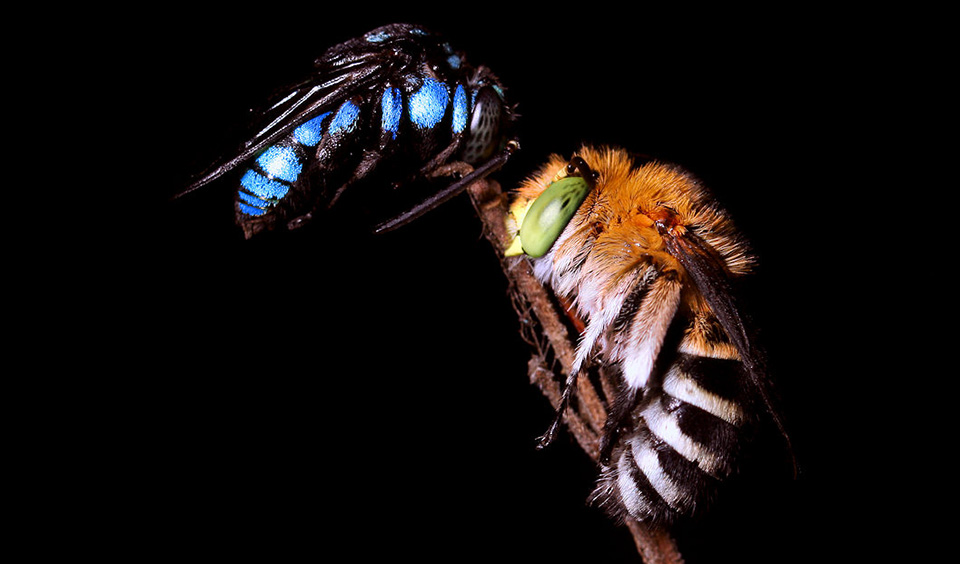The neon cuckoo bee is a shiny parasite

Bec Crew
Bec Crew

THE NEON CUCKOO BEE (Thyreus nitidulus) is just stunning, with its metallic blue sheen and slick, black wings. And its scientific name, which means ‘a little shiny’ in Latin, is adorable too. But don’t be fooled – this species has no problem doing some pretty disgusting things to get ahead in life.

A neon cuckoo bee (left) preys upon the native blue-banded bee. (Image credit: Photobitz)
Found in New Guinea and throughout eastern and northern Australia, in New South Wales, Queensland, South Australia and the Northern Territory, the species has evolved a parasitic lifestyle to ensure the survival of its offspring. It preys on a similarly – but not so brilliantly – coloured native species, the blue-banded bee (Amegilla cingulate), which you can see in the extremely well-timed image above.
Neon cuckoo bees prey on native bees
When a female neon cuckoo bee has eggs to lay, she won’t build a burrow nest of her own, but will instead seek out the burrow nests of female blue-banded bees. Unlike many species of bee, blue-banded bees are solitary insects, but the females often come together to build their burrow nests near each other. Which is pretty convenient for an expecting neon cuckoo bee – if she finds one nest, she’ll probably find two or three.
Inside these burrow nests will be several brood cells, into which the blue-banded bees will have laid their own eggs. In preparation for hatching, the blue-banded bees will fill each brood cell up with pollen so her offspring will have plenty of sustenance the moment they complete that tough journey through the confines of their tiny egg shells.
But if a blue-banded bee baby is really unlucky, instead of hatching to find its very own all-you-can-eat pollen buffet, it will find itself in a stark, empty brood cell, with a fattened intruder sitting by to watch it starve to death.
What happened? Well, that fat intruder’s mother found a blue-banded bee burrow nest that hadn’t been sealed yet, and when there were no blue-banded bees around, she slipped in, laid her egg, and got out of there quick-smart. If the baby neon cuckoo bee hatches earlier than the blue-banded bee baby, it will get all the pollen and a great start to life.
It’s always the pretty ones you have to watch out for.




